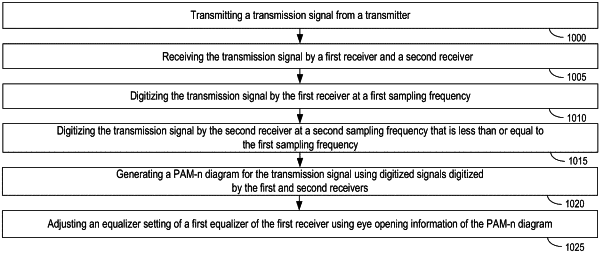| CPC H04L 25/03031 (2013.01) [H03M 1/1215 (2013.01); H04B 10/541 (2013.01); H04B 10/6971 (2013.01); H04L 25/03267 (2013.01); H04L 27/01 (2013.01); H04L 2025/0349 (2013.01)] | 20 Claims |

|
1. A method comprising:
transmitting a transmission signal from a transmitter;
receiving the transmission signal by a first receiver and a second receiver;
digitizing the transmission signal by the first receiver at a first sampling frequency;
digitizing the transmission signal by the second receiver at a second sampling frequency that is less than or equal to the first sampling frequency;
generating a pulse amplitude modulation (PAM) eye diagram for a plurality of transmission amplitudes of the transmission signal by the second receiver using digitized signals of the transmission signal digitized by the first and the second receivers; and
adjusting a first equalizer setting of a first equalizer of the first receiver using eye-opening information of the PAM eye diagram to compensate for transmission loss of the transmission signal.
|